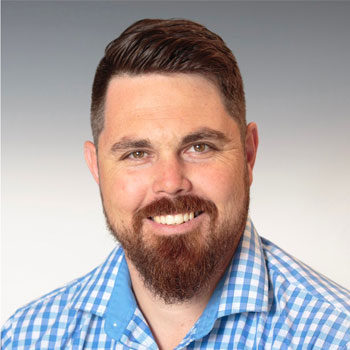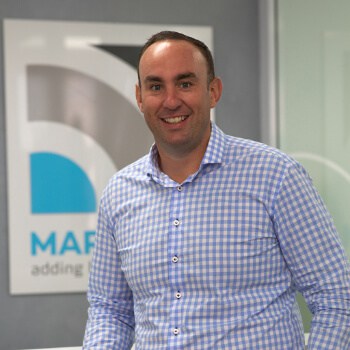In this very interesting conversation, Frans talks us through the need to make concrete itself a more sustainable product. There’s a serious problem with waste in the industry – the figures for New Zealand alone will blow your mind. Then there’s a tendency to resist change and an urgent need for improved training across the industry.
Creating a Sustainable Future for Concrete

Invisible Strength
Creating a Sustainable Future for Concrete
/
RSS Feed
Creating a Sustainable Future for Concrete
AEON – aeoncon.co.nz
Frans Maritz on LinkedIn – linkedin.com/in/francoismamict
CEMEX and Sustainability – cemex.com/sustainability/future-in-action/sustainable-products-and-solutions
CarbonCure – carboncure.com
View the Transcript
HAYDEN: Hello and welcome to another episode of MARKHAM’s podcast series, Invisible Strength. It’s good to be back and it’s good to have another guest speaker on today.
So myself, Hayden Prestige, I’ve been with MARKHAM for seven years, coming up eight years, look after the Design and Delivery team.
And today we’ve got on Frans Maritz! So he’s a registered civil engineer specialising in concrete technology and very interested, in particular, in sustainable carbon reduction, which is a huge topic nowadays, so it’ll be really interesting to get those thoughts there. Frans is a member of the London Institute of Concrete Technology, and I believe Frans, you’re currently studying for a Master’s degree, right, in concrete technology?
FRANS: Yes, it’s on my list. I haven’t started it yet, but it’s on my list! So I need to complete it by the end of next year. So yes, the university’s been pretty lenient with me.
HAYDEN: So you’ve got a big bucket list, by the looks; but good on you for committing! It’s good to have you on today; would you tell us a little bit about who you are, your background, your experience?
FRANS: Yes, all good. Yes, I’ve been in the industry for about 17 years now. Obviously from South Africa as you can hear by my accent! I started as a lab technician; you know, working in the lab, weighing up samples; and then the company sent me for a few concrete courses, saw the potential in me and. And yes, I’ve just started studying concrete and then eventually moved up to the different levels of the concrete technology courses. And then, like three or four years ago, I signed up for the post-grad. Post-grad and it goes to the Master’s. And yes, I had to stop studying a little bit just so I can get the registration stuff done, unfortunately. And yes, now I’ve got my own little business running. Obviously, a few things I’m really interested in pushing into the market. I don’t think it’s enough people out there doing this sort of thing.
I’ve worked on quite a few projects from precast yards to concrete plants, to dams, water-retaining structures, so a lot to do with durability stuff. Yes, that’s it, in short.
HAYDEN: Love it! I love how you’ve come up through the, you know from grassroots, so to speak. You know pouring samples, taking you know, probably shrinkage beams and things like that, right up to civil engineering, like you mentioned dams and things. So a lot of history. You’ve had a lot of experience, so that’s I think that’s actually what the industry needs. We get a bit shy on actually asking the right people for the right information, the people that have been there and done it, so good work.
FRANS: That’s correct, thanks for that. Yes, definitely from the ground up; and I reckon I’ve walked the hard miles in my career. I haven’t had it easy, you know, with studies and things, but yes, made it, eventually a civil engineer! Then like you said, experience. It’s the key thing, you know, driving the industry.
HAYDEN: Yes, you can’t replace it. I mean, there’s the technical side that we need to learn, but to actually physically do it, I think, is given us the key results, right?
FRANS: That’s the one. Yes, correct yes.
HAYDEN: So obviously New Zealand based now, when did you move across then?
FRANS: Yes, six years ago, hey. I moved over here, started the job with Wilson Precast. I was there for probably six months. And then I got a job with Stephenson Concrete. So I wanted to get back into, you know, just the concrete ready-mix side of it. I think that’s probably where a lot of my strength lies, in that mix design and product development. And then I’ve started this year January with AEON and yes, so far so good. I’m getting good support from the industry and I’m just loving it.
HAYDEN: That’s good, it’s awesome. Such a big topic, as we said earlier, sustainability, reducing that carbon, and, you know, that reliance on what’s actually going into concrete and pulling that back. So tell us a little bit about AEON. What’s the focus? What’s the direction?
FRANS: Yes all right, yes. So when I started thinking of, you know, wanting to start my own little business. There was always the idea in my head of starting my own thing; but the thing that triggered me to just move along with it was, you know, partnering up with the guys from CEMEX in Europe, bringing some of their products over here; which a lot of the stuff they do is also around sustainability, carbon reduction, you know, additives. The one key thing around the sustainability stuff is the amount of waste we’ve got in our industry, you know, in New Zealand. And I mean it’s all over the world, all ready-mix producers. They all struggle with the same thing.
There are things out there that can help the industry, you know, move, move forward and do things better. It’s just, Do we want to make that change? Right, so when the idea of AEON came to mind was … I first had to think of a name and I wanted that name to stand out too, you know, basically say what we do. And I don’t know if you guys are familiar with what the word AEON means, but it’s something that keeps on going. It’s something that doesn’t stop, it’s endless. Right, and that’s the way we need to look at our resources as well. You know, we need to make them work so they are endless for us. You know, like they need to keep working.
Specifically talking about aggregates, New Zealand got a problem. It’s starting to get there. We’ve got a problem with aggregate supply and it’s going to probably get worse as we move into construction booming and stuff like that. And we need to find ways to use every little bit of aggregate we can; back into our concrete. We need to see where we can save on cement and all those sorts of things to bring down the carbon footprint. So AEON is all of that. It’s all just making things go forever. It’s also the infinity sign ∞, you know, AEON refers to that infinity sign, and hence the infinity sign in my logo. So things just making concrete without waste and it just keeps going on and on, and we don’t send anything to landfill – that’s the aim.
And I’ve been talking to a few guys in the industry. We’re working on a few small projects, some of them still need to get back to me, but so far everything’s been positive. You know, people want to make changes. It’s just all about timing at the moment, you know? Covid and everything around it; so you know, it makes it a bit challenging. But yes, they are all keen to change.
HAYDEN: Yes, brilliant! Do you find … I mean, that’s a really good summary; making things last forever. It sort of goes into where we roll as well, a little bit, adding service life to concrete; trying to maximise the life of concrete for a start. But I love that your approach is getting nothing back into landfills; utilising less material, making it once, making it right, that’s good.
But do you find some of the resistance to change can just be, stuck in tradition, is that a …?
FRANS: Definitely, definitely. Nothing against the older generation, but a lot of them are stuck in, We’ve always been doing it this way. It’s too hard to change. People are used to what they do. The daily routines. And a lot of the time … you just have to make that one move and everybody else will follow. You know, it takes one company in the industry to do something magnificent and everybody else will eventually follow. Because they actually see It’s do-able.
And I think that it all comes down to top leadership. They need to enforce those changes and say listen, we want to make these changes and this is what we want to do. This is part of our strategy and goal, and just push it forward and everybody will follow.
HAYDEN: What would your typical approach be to someone like that, that wants to try it, wants to dabble in it a little bit? – a little bit hesitant because hang on. I’ve always done it this way. What’s your sort of ‘go to’ approach there?
FRANS: Yes, so I always try to tell them, if they’ve tried this once and it didn’t work, just try another way. All right, there’s always more than one way to skin a cat. The old saying. And the same with getting rid of our waste; or just, you know, any situation that you manage. Do you want to actually get to that goal? You can’t just do it once and say, Oh it didn’t work, and then just back into your old ways. You have to keep trying new things. And as long as you keep trying, then you know you are going to get to something better eventually. And I think that’s probably the thing I’ll try and share with them, is just, Keep trying.
There’s always an engineering solution for everything. I mean, if guys can fix something up with duct tape, it’s a simple solution, right? We just need to make a plan, that’s all.
HAYDEN: It’s like you’ve lived in New Zealand too long! You’ve studied us!
FRANS: Yes, I know a man…!
HAYDEN: That’s good, I think it’s really good. I mean it really comes down to your mindset as well, you know. Are we committed to making a difference? Once we’re committed, we’ll find a way to do it, and that’s where you can be providing options.
FRANS: Correct, correct. Yes, and I mean, from AEON’s side, we won’t just drop a product off and say Listen, there you go. We really, really get into it; we like getting our hands dirty. You know we won’t leave customers to it. I must say, I’m very operational savvy, I understand how most of the concrete operations work. And I think that benefits the customers, as well as myself. So I can go into an organisation; I can see how they operate; and, you know, give them some good guidance on how they can actually make it work. You know, some simple steps. I might not always be taken, you know sort of seriously. They might think I’m, you know, young, and doesn’t know what to do. But if they try that at least once or twice and they can see, Oh yes, there’s definitely a benefit here. Then yes, that will make a change.
HAYDEN: Fantastic, that’s good. So you’ve mentioned… so your work is done at the concrete plant. Is it right?
FRANS: Yes, so I’ll just go maybe through a few products and stuff, just to give you an idea of what we’re working on. One of the things we want to focus on is just, like I said earlier, waste reduction. So I mean, just to give you guys a bit of summary of how big this thing is. So New Zealand has 4.5 million cubic metres per year. All right; about average 5% of all that concrete is waste. That’s the slurry, people ordering too much concrete; and 75% of that, you know… I’m talking about … there’s a lot of companies making concrete blocks. It is a time-consuming process, but 75% of the rest of that actually lands up in landfills. Or some you know, gets dumped somewhere. That’s … we’re talking about 350,000 tonnes of concrete. That’s a recyclable material. That’s a lot of virgin type aggregates which we can reuse with this product we’ve got on the market now; that we can actually just, you know, instead of dumping it, reusing it. We’ve got other stuff around the carbon footprint reductions. So I’ve partnered, I’ve teamed up with the guys from CarbonCure. And so my role this side will be really to assist them visiting a few plants. They’ve got their technical guys in Australia who will do their visits every now and then here. But I’ll try and be a bit of a support structure for New Zealand and just get customers to understand the benefit of using CarbonCure. It’s definitely a saving on cement. It’s all just around quality control. You know, if you’ve got a plant with good quality control, you’ve got to put your carbon, your CO2 in the concrete, you can reduce cement. That’s a fact. I’ve seen for myself.
And then other stuff is just training, you know. So we want to make … we’ve seen a lot of … and you would see it in on the field as well, Hayden, a lot of structures are in such bad condition because people lack training. They don’t understand why concrete needs to be vibrated. They don’t understand why you have to place concrete in a specific way. You can’t drop concrete 3 metres high and expect you’re going to get a highly durable long-lasting 100-year structure. It just doesn’t work like that.
I see a lot of companies go back and just do a lot of remedials. Instead of just, you know, once I’ve hit that that rock like, Oh we messed up here. Get the guys some training! I don’t know why people are slack on training, but training is really important. Because I mean, if you just start at the beginning of a job and train people up, your chances of having any remedials on that side, it’s going to be so slim, and you know you’re going to have a high quality, high durability, structure. Got a happy client. Everyone going to be happy, you know.
HAYDEN: Absolutely, and in the … I mean, I don’t know if anyone actually puts a sum in for remedial costs, but it’s a huge number. If you get it right at the start to what compares with training to what you’d spend on remedials … absolutely.
That’s some mind-blowing … I didn’t realise those figures were so high in wastage and what’s just been tipped out, so to speak. Yes, what you’re doing is really good. MARKHAM as a company is always interested in technology and what’s going on. It’s been good. There are some of the numbers we can share with our, you know, with the market and say, What do you guys do about wastage? Have you … you know? Things like that, so yes, yes.
FRANS: And then, interesting fact as well, councils are really, you know, turning, closing the taps on giving guys consent to actually start tipping these in a landfill. It’s quite a few enquiries, that when they renew their consents, they’re not allowed to take any concrete waste anymore, and that’s across the whole of New Zealand, which I think it’s a good thing, you know, with the Council sort of pushing the industry to start… You know, they need to make a plan of reusing this, or do something with it because they can’t keep putting it back in the landfill. The high pH and even, you know, bleaching out of the ground. That’s another high risk. So no, it’s really good. So I support the Council on that. Some people might not agree, but I think that’s the way forward.
HAYDEN: That’s good, so about protecting the environment we live in.
FRANS: That’s the one, correct.
HAYDEN: That’s good; and getting the right structures, too, like you need, right … I’m thinking building structures. You know, making it last and getting it right at the start of things. There’s a huge benefit to them.
FRANS: Definitely yes, yes. So I mean, it all comes together under that sustainability and just doing it right the first time. So part of AEON’s … I mean, you can see in our slogan is to create a sustainable future for concrete. Right, so everything we do, our one goal is how can we make, keep concrete a sustainable building material? I mean, we’re getting a lot of mouthing from the timber industry. Sorry if anybody from the timber industry is listening to this at the moment, but it is the truth concrete is the, you know, it’s a really good building material. It’s just been, you know, the carbon reduction that’s really … or the carbon figure, the footprint of it, that’s really making it real bad. But there are ways of reducing that and making that concrete, you know, lower carbon.
I mean, there’s this other concrete out there; unfortunately, New Zealand doesn’t have all the raw materials, but a geopolymer concrete, you know, there’s no cement in it. I won’t say that is the future to be honest, because again, it’s all that different cement, supplementary materials that… you’re not going to get them all here. But is that a long term sustainable sort of option? You know, having all that flyash and the like to make concrete up. I don’t think that’s the way to go. There will be some other alternatives. And CarbonCure is one, as I said earlier.
But if you use, if you use five different things together in a mix design, you probably can reduce that carbon footprint significantly, so it’s not one golden bullet, right, so you just got to use a few.
HAYDEN: And then we need people like yourselves that can direct us into that. You know, what goes into the mix. So that’s good that you’ve branched out and gone into that space, I think it’s really beneficial for the industry, yes.
FRANS: Thank you.
HAYDEN: So that’s good. Good update, good overview. I much appreciate your time coming on! If anyone wants to get in touch with you, what’s the best way to go about it?
FRANS: So they can log on to our website. Then just log an inquiry there. Or they can just phone us. Our website is aeoncon.co.nz, or they can just phone us on 021 535 603. That’s my direct cell phone number.
HAYDEN: And we’ll be sending people that way as well if the question comes up. So thanks very much, Frans. Thanks very much for your input. Thanks for jumping on.
FRANS: Thank you guys for inviting me. Appreciate that.
HAYDEN: It’s good, and we’ll see you all next time!
FRANS: Awesome guys, thank you.
Want to Contribute?
Feedback on our podcasts? Suggestions for future topics? Looking for more information on topics we’ve discussed? Send us a message – we’ll be in touch within a day or two.
More about MARKHAM
MARKHAM are dedicated to providing innovations for concrete and construction. Focusing on concrete waterproofing solutions, penetrating concrete sealers and durability treatments for concrete.
Podcast Categories
Latest Episodes
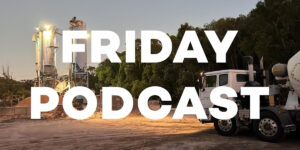
Doug & Laike Share Their Week – Western Australia, Christchurch, and a Focus on Low Carbon Concrete
Laike and Doug wrap up their week again with a 10-minute chat. They’ve each been
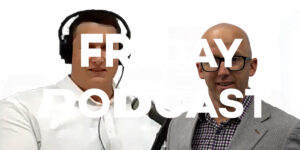
Doug & Henry Share Their Week – R&D, Melbourne Traffic, Basement Waterproofing, And ‘CONQOR Your Health’
It’s Henry’s turn to join Doug in the podcast studio – in person this time!
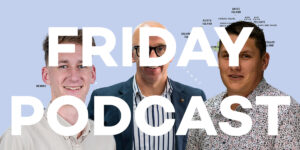
Doug & Laike Share Their Week – Seychelles, Readymix Plants, And A Bike Ride
Once again Doug and Laike sit down for a 10 minute recap from the week.
invisible strength podcast
The whole MARKHAM team is pleased to present you with our podcast series, INVISIBLE STRENGTH. In this series of interviews, we’ll walk through the science and challenges of concrete durability, what goes wrong in the field – and the advanced methods available to restore and enhance service life to concrete construction.
INVISIBLE STRENGTH reflects a number of factors in concrete construction and durability. When things go wrong, the evidence can become very visible indeed. However, when all is going well, there’s nothing particular to be seen!
MARKHAM’s concrete treatments, too, are invisible once completed – and the result is the long internal, invisible durability of the concrete.
So join us as we explore the unseen world inside concrete – why it matters, and how it can be protected!
